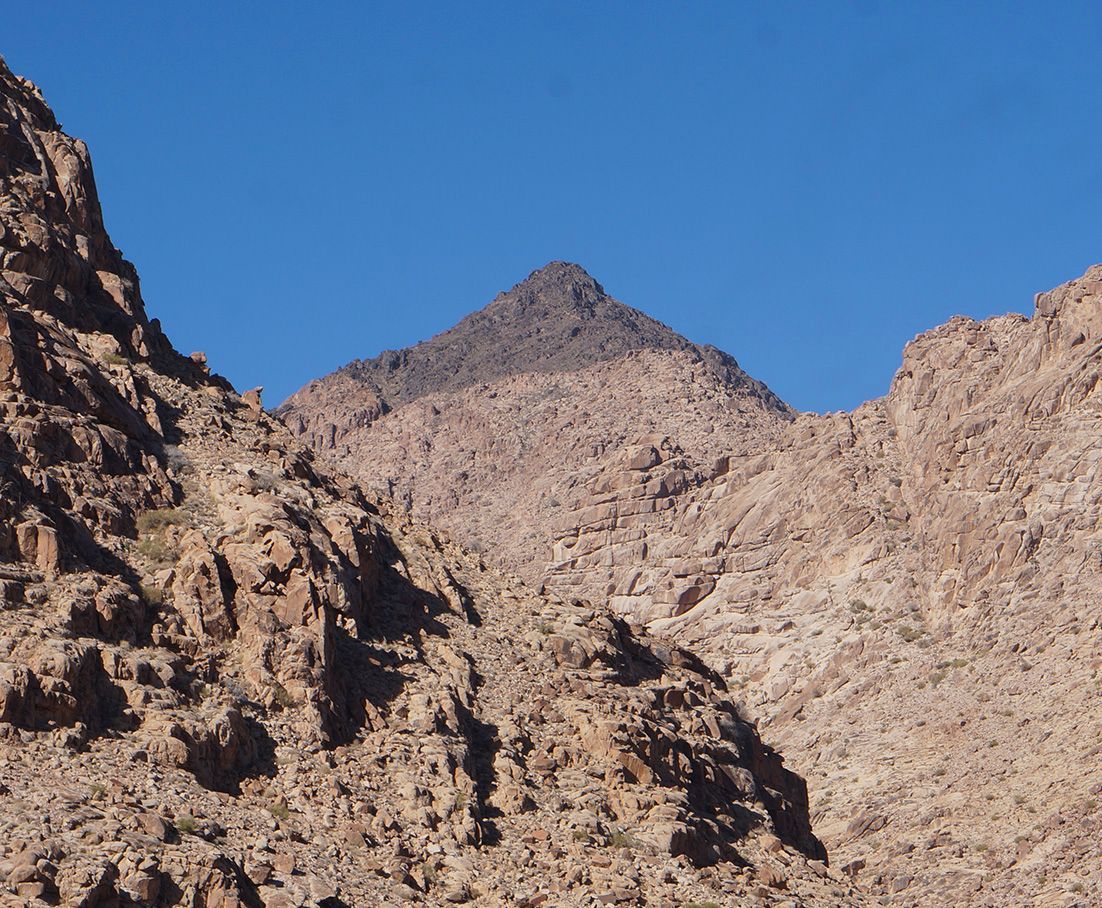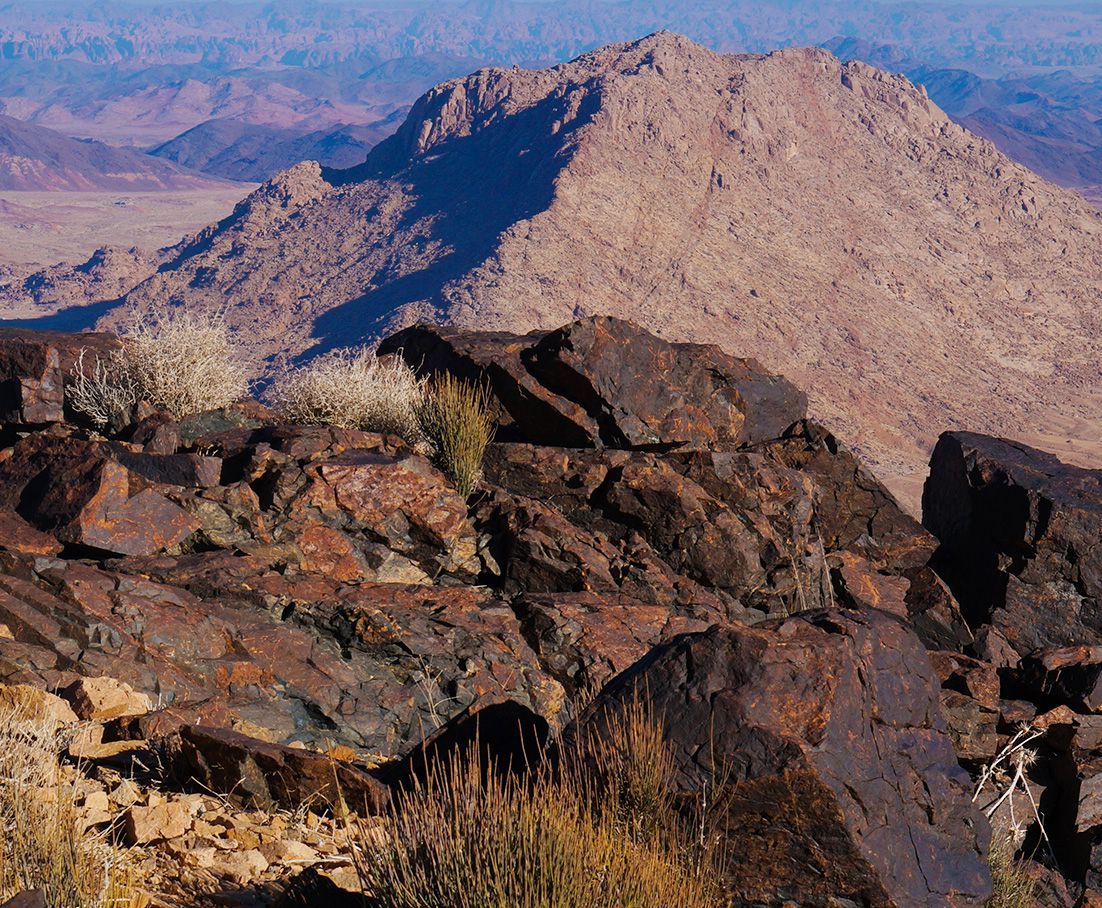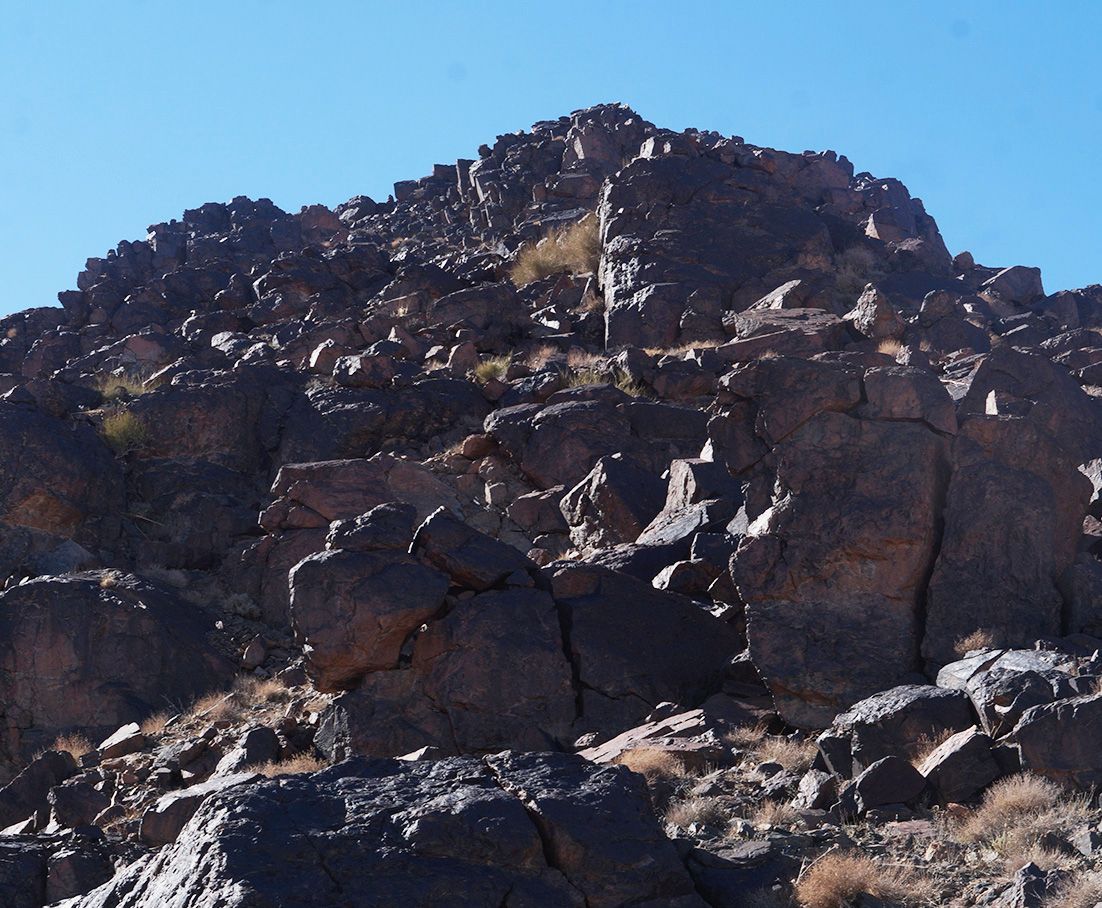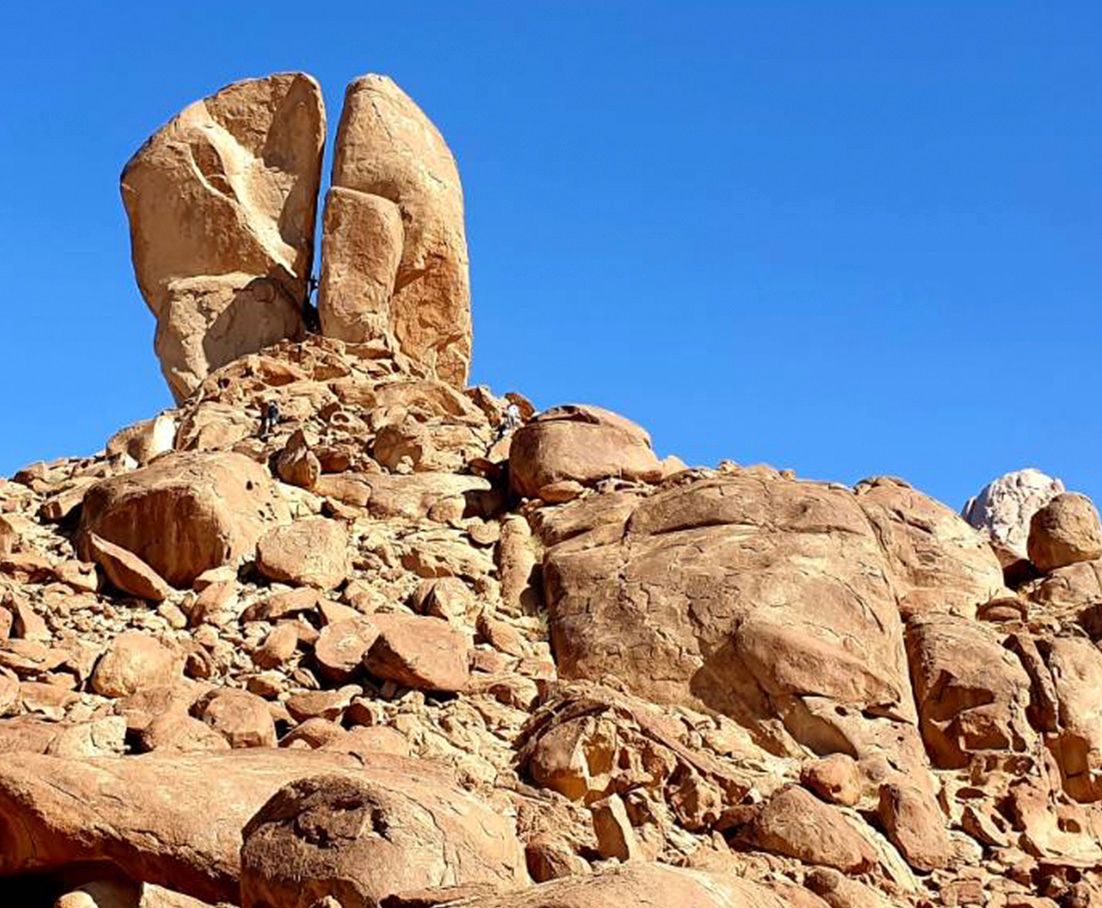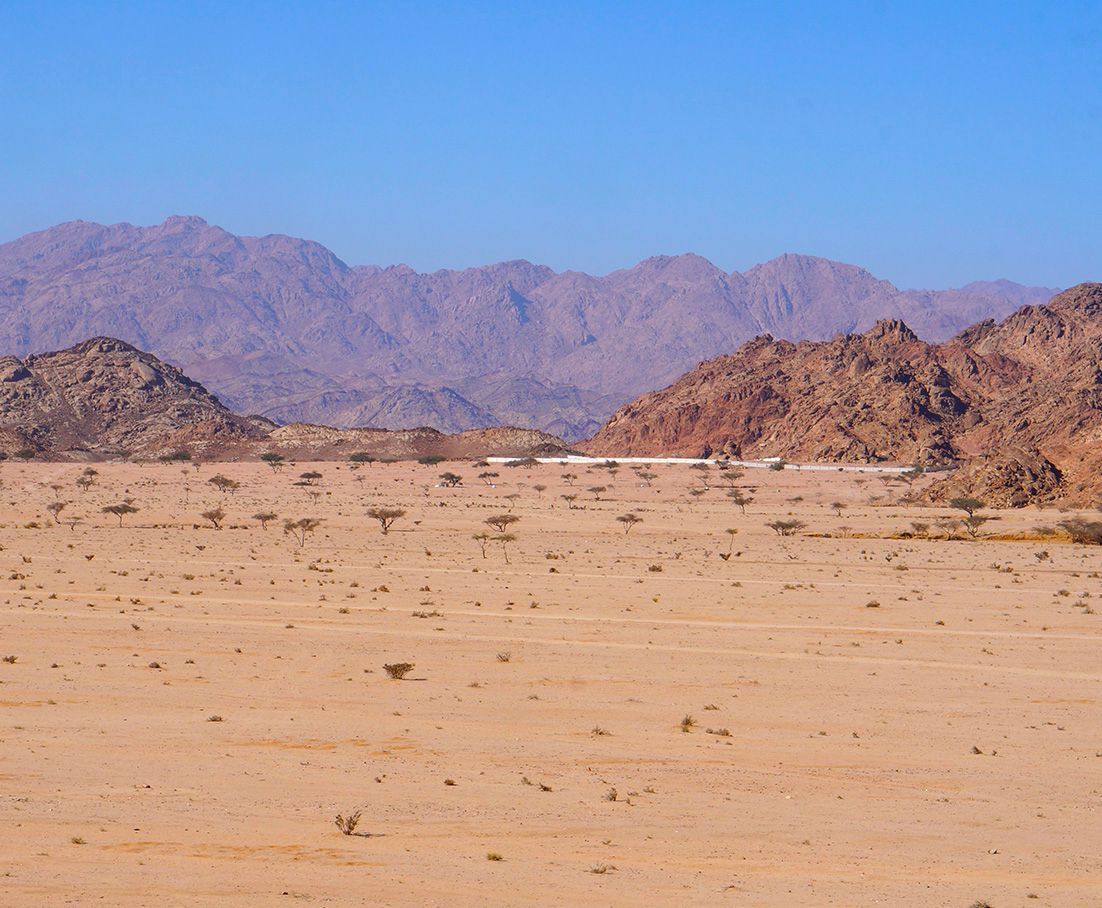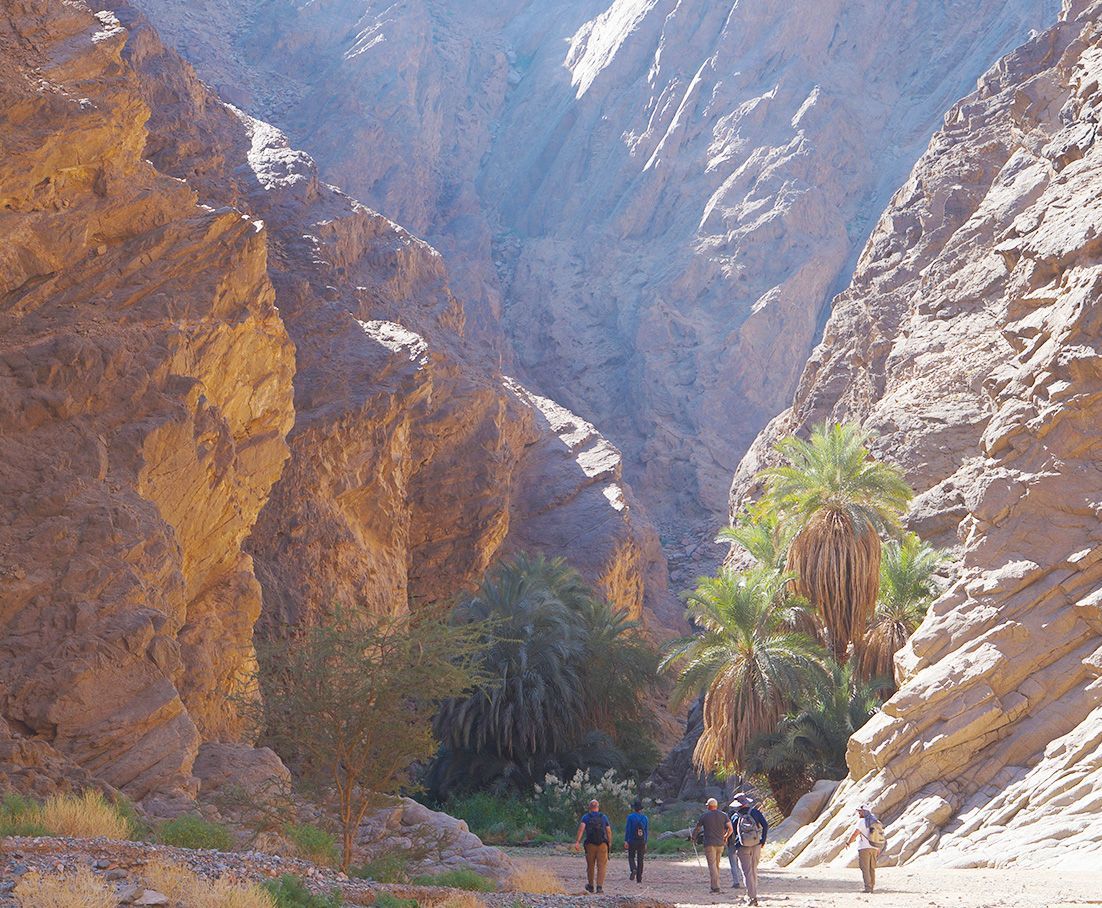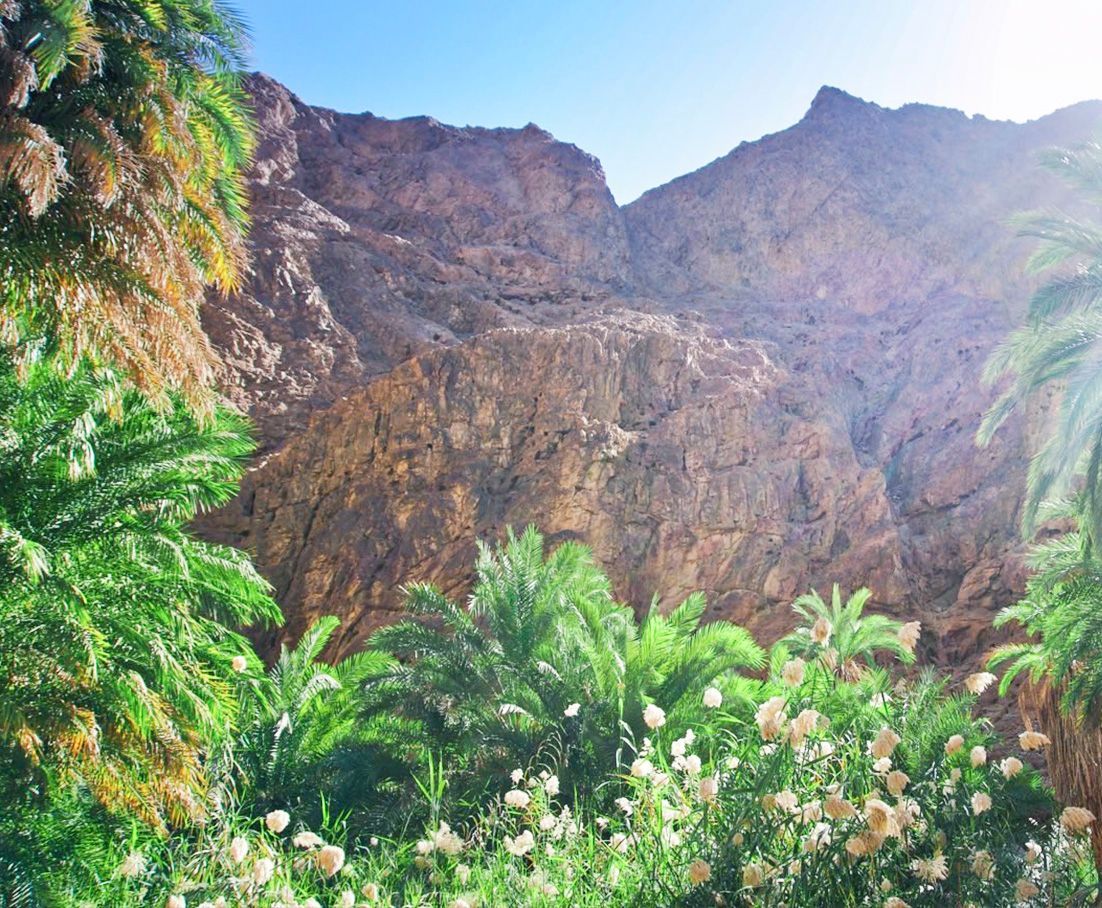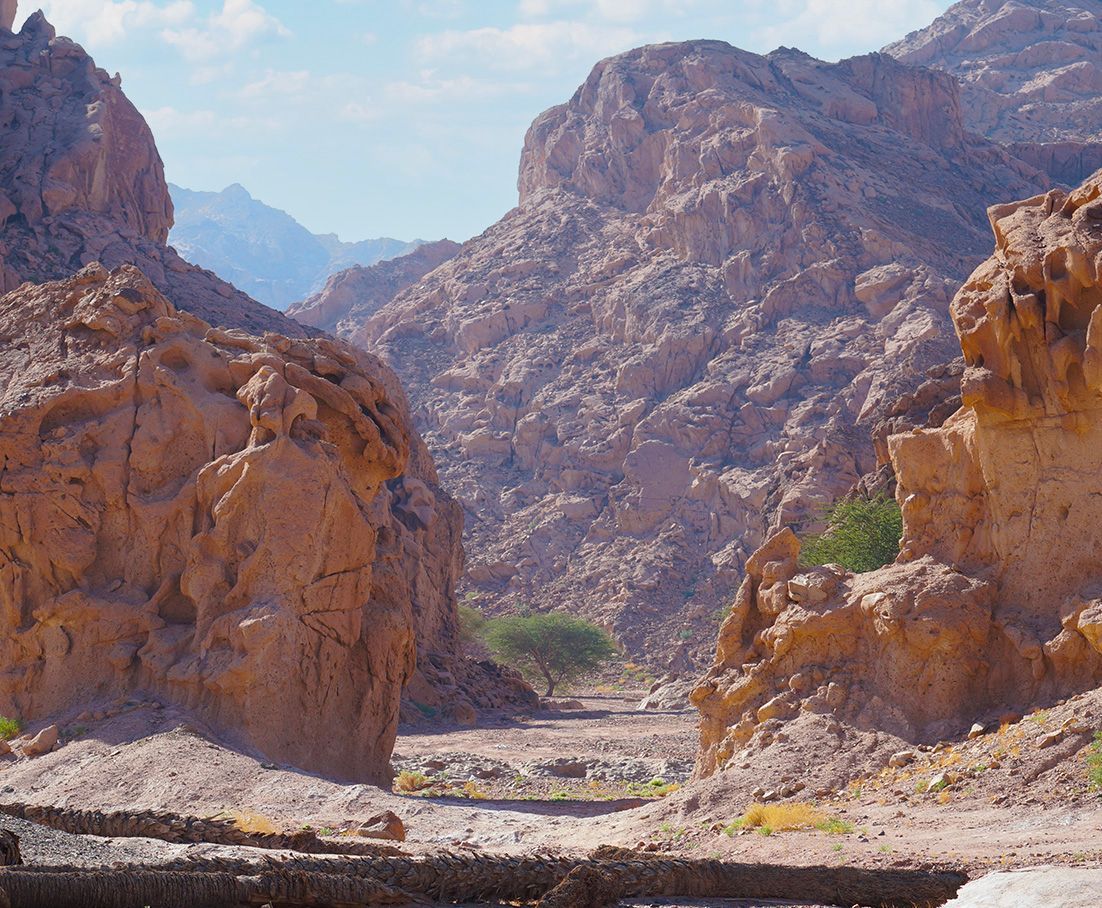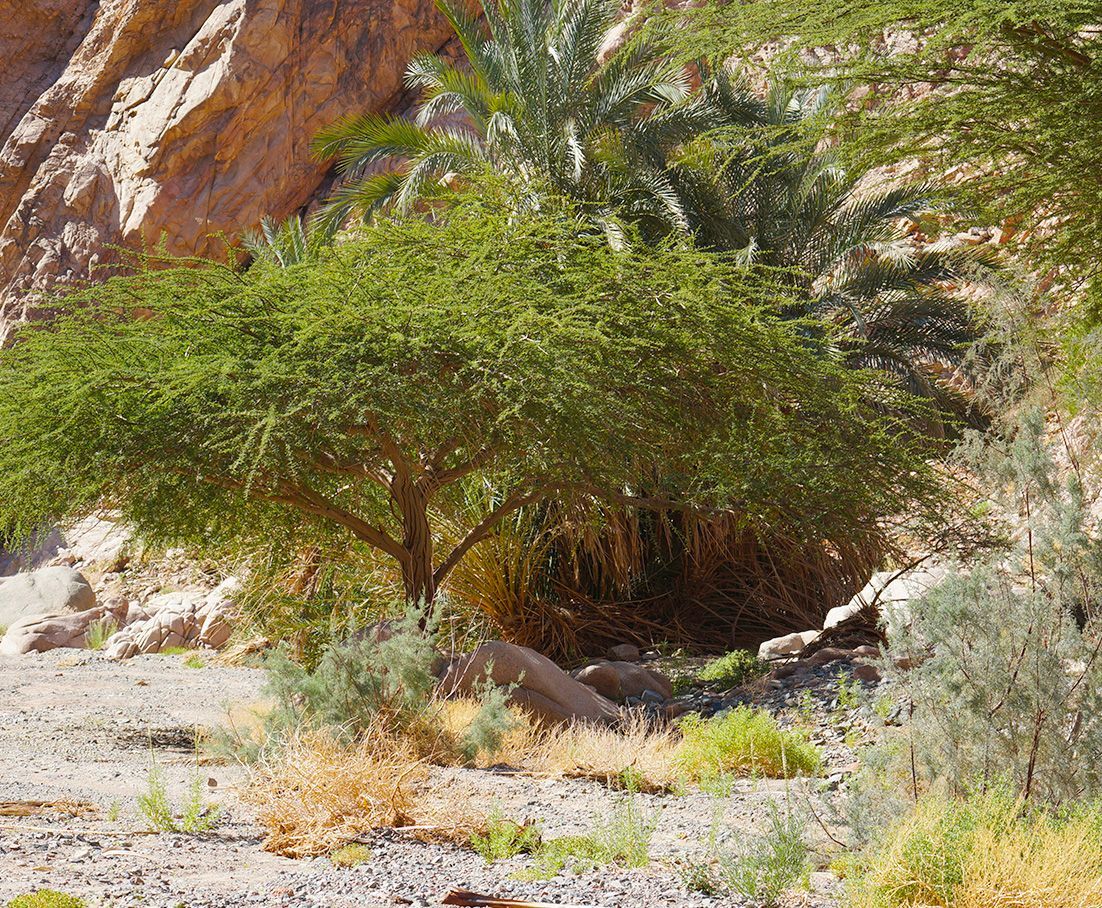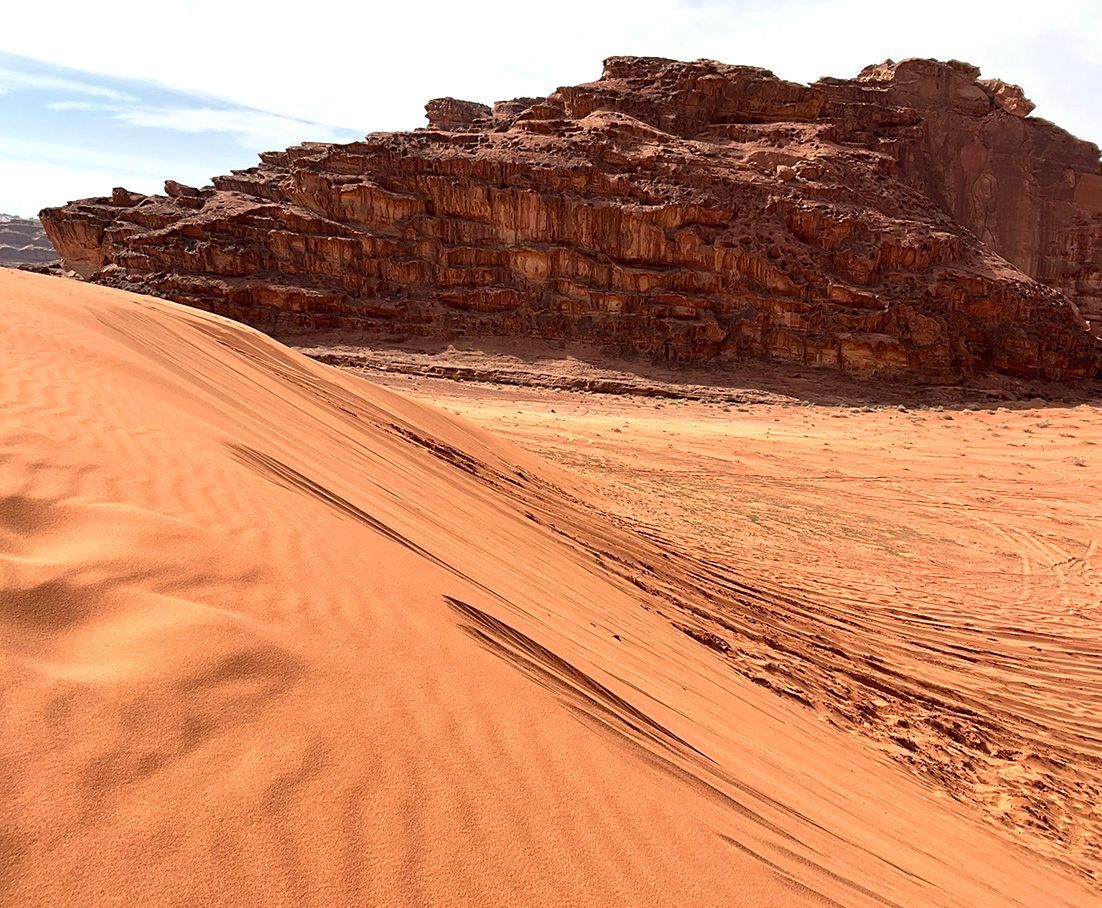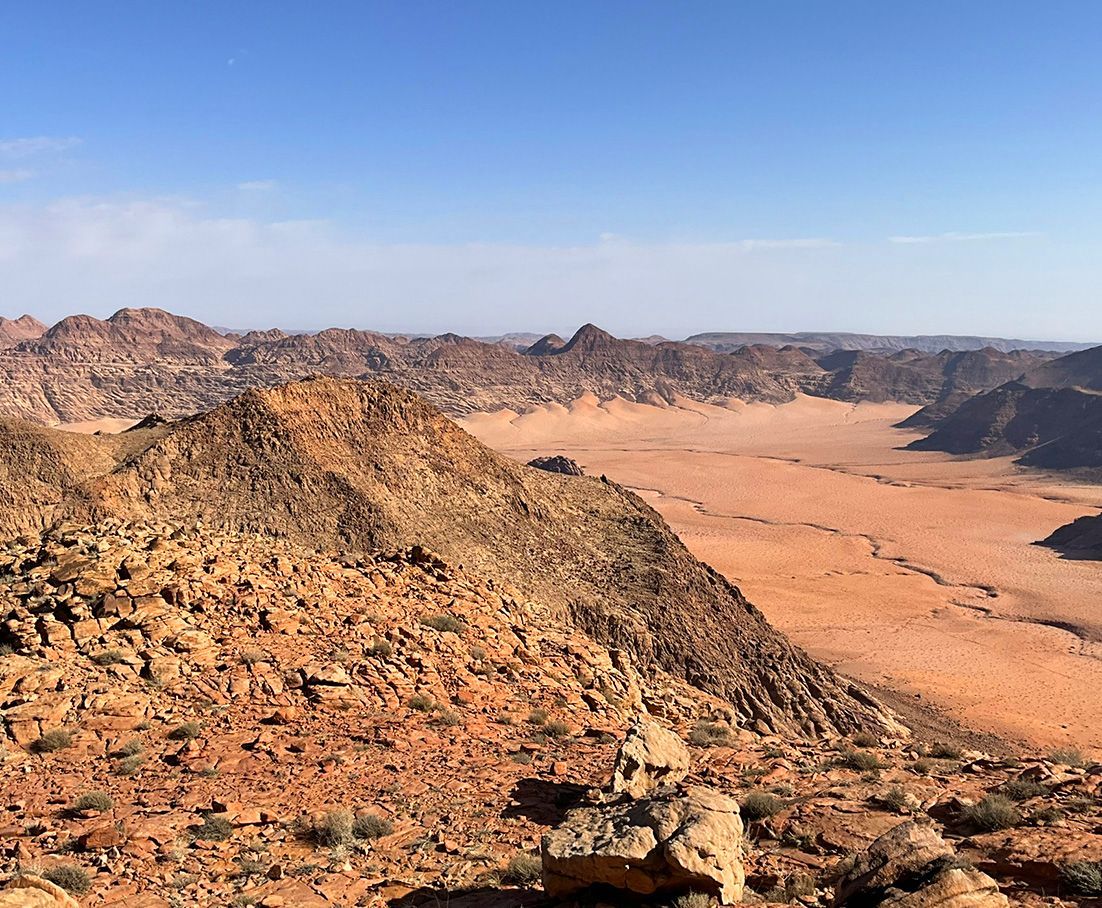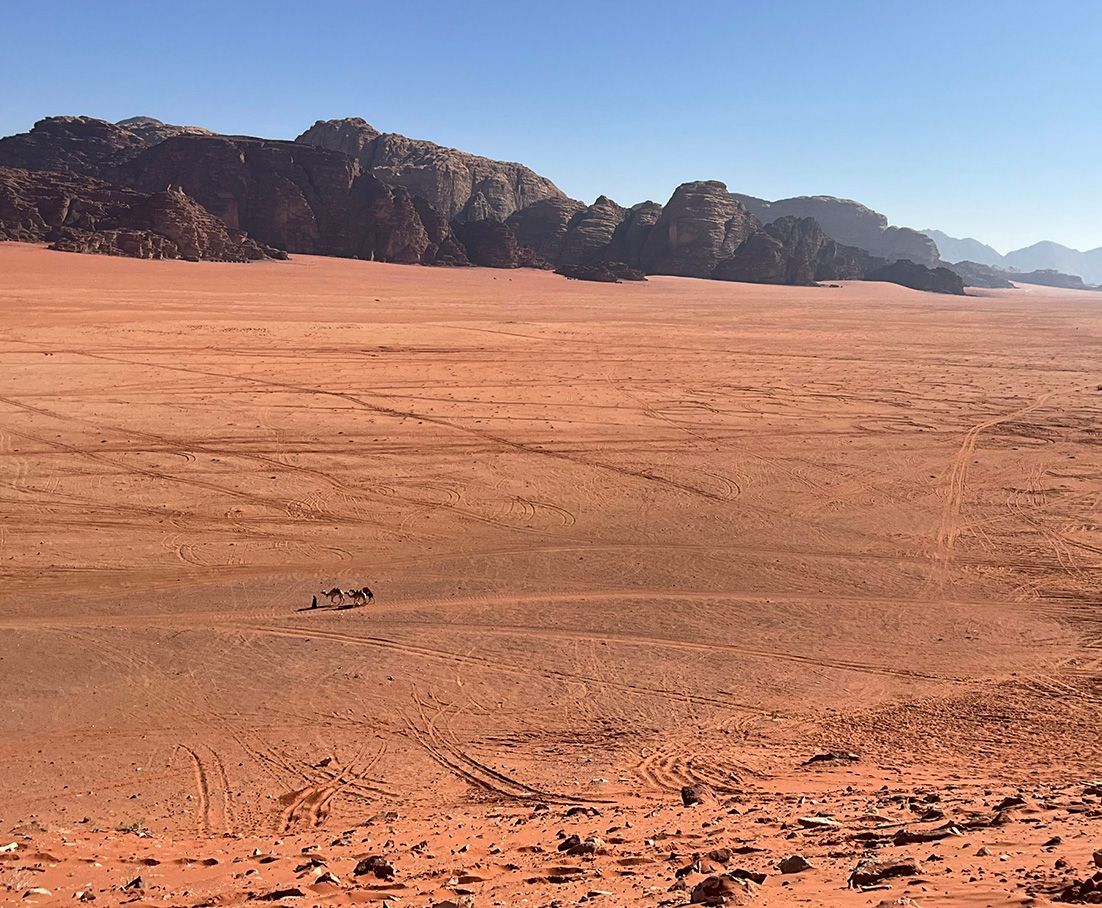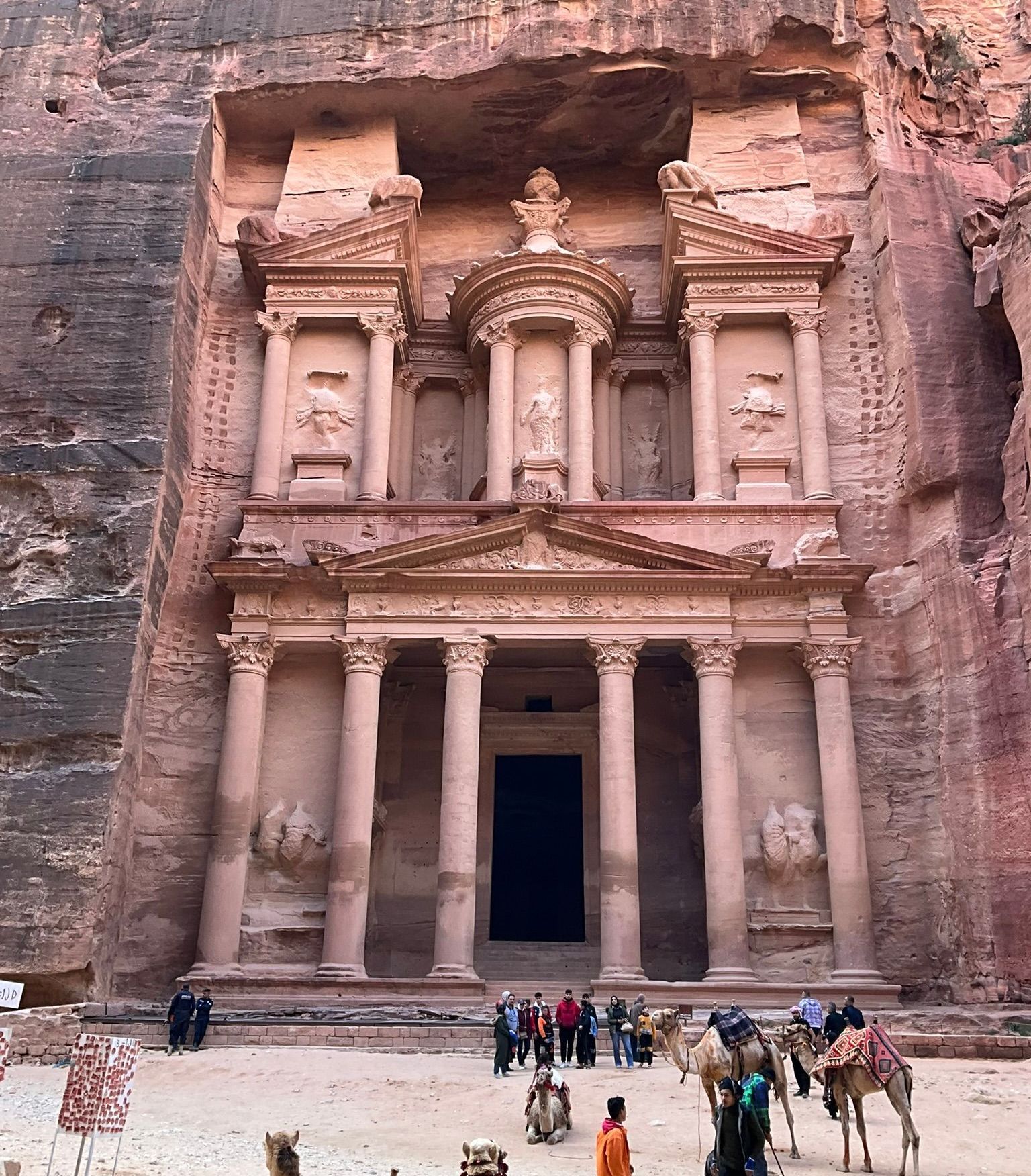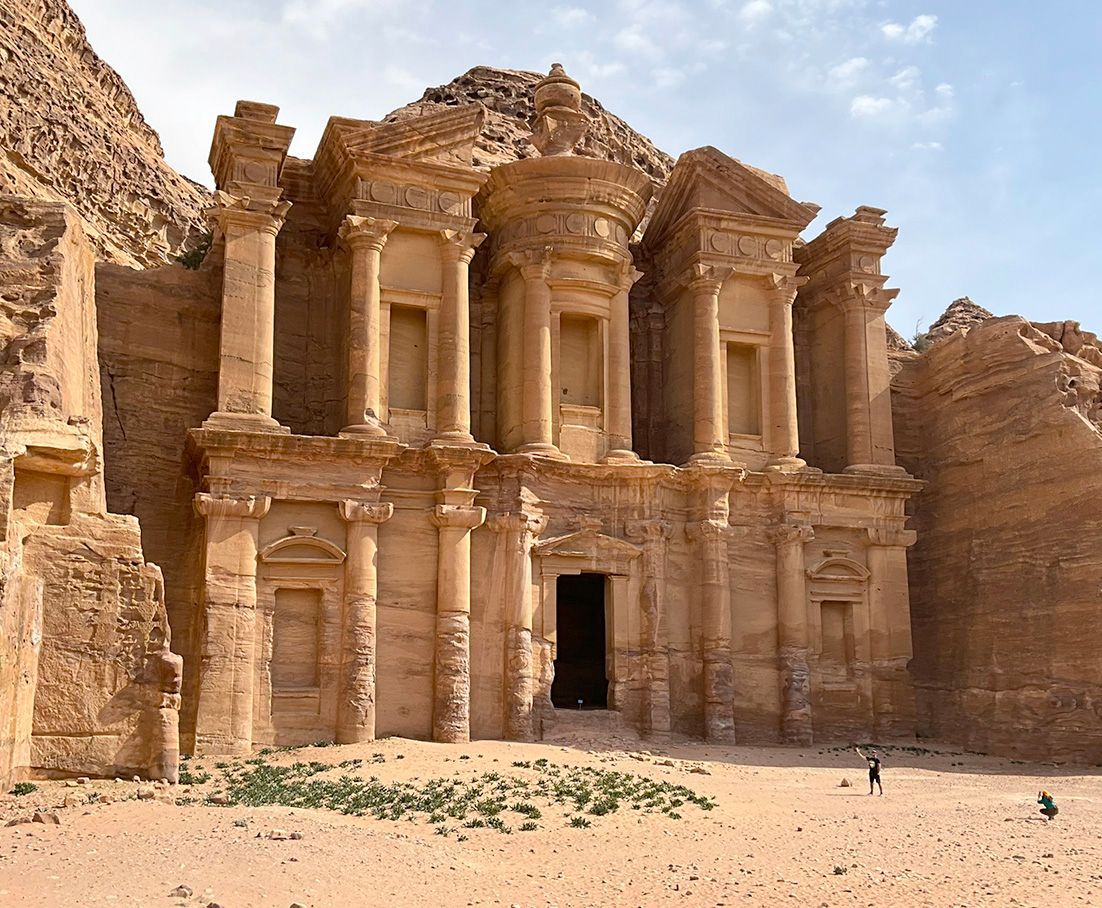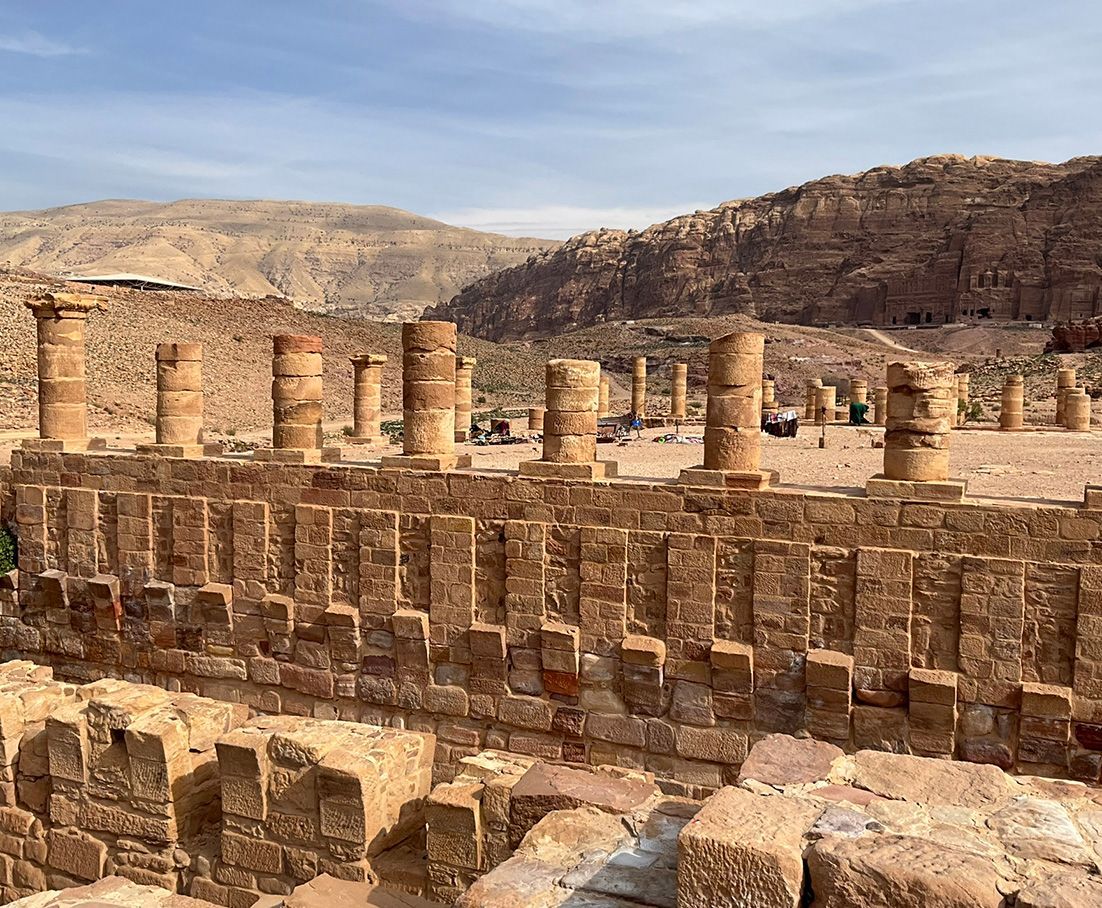Exodus
Sites
From The Red Sea to The Jordan River, Tour Packages Include Selections of These Sites That Bring The Exodus to Life.
Mount Sinai
Mount Sinai is called the mountain of God. It is the place where God revealed His name to Moses through a burning bush. It was here that God descended in dark clouds and fire and where God gave the Ten Commandments on stone tablets. Today, the peak is called Jabal Maqla (which in English means ‘Burnt Mountain’) because of the distinctive black rock at its peak. At the base of the mountain there exists the remains of the Altar of Moses and the remains of the 12 pillars, both which God commanded Moses to set up in Exodus 24. Nearby are petroglyphs depicting ancient Egyptian calf worship, which are unique to the region and thought to be the site of the Golden Calf incident. Visitors who choose to hike the mountain will experience its awe inspiring grandeur and magnificent views of the desert landscape. They will have the ability to go to Elijah’s Cave on the mountain and to walk on the Plateau of the 70 Elders.
Split Rock & Rephadim
After experiencing their deliverance from Egypt and the miraculous crossing of the Red Sea, Moses led the Israelites to a place called Rephadim. Here in the desert, while they were obeying God’s command to go to Mount Sinai, they had no water. Then God commanded Moses to strike “the Rock of Horeb,” after which the Rock split in two (Is. 48:21) and water gushed forth like rivers (Ps. 78:15). In a desert filled with rocks, this “Rock of Horeb” was a landmark near Mount Sinai. Located on a sizeable hill and towering 4 or 5 stories tall, visitors today can see this impressive and iconic landmark from miles away. Nearby are possible locations for the battlefield where Israel overcame their struggle with Amalek when Aaron and Hur held up the hands of Moses.
Elim & Wadi Tayyib al Ism
Elim was the second stop for the ancient Israelites after crossing the Red Sea. It is described in Exodus as an oasis having 70 palm trees and 12 wells. Today, there exists an oasis not too far from one of the proposed Red Sea crossing sites that fits that brief description of Elim. It stands out in the desert landscape with palm trees and around a dozen wells. It sits at the entrance to the amazing Wadi Tayyib al Ism, a beautiful oasis gorge with an easy 3 mile walk to the Sea of Aqaba. The shade from the gorge and the water trickling down from the oasis to the sea provides the ideal natural habitat for exotic desert flora and fauna. You can imagine ancient Israelites exploring this wadi as they camped nearby. Walking through this wadi is an unforgettable experience and a highlight on the Way of Moses tour.
Wadi Rum
Wadi Rum is a protected desert wilderness in the south west of Jordan. It is famous for its natural landscapes, enormous rock formations and red sand. The beauty of Wadi Rum has long drawn the attention of people. The renowned and almost mythical Lawrence of Arabia visited Wadi Rum on several occasions and is thought to have set into motion the Arabic rebellion from the Ottoman Empire during WW1 there. Many films have made their sets here. It is also likely that the Israelites made their way through some of these parts in their wanderings and on their way to the Promised Land. Umm ad Dami is the tallest mountain in Jordan and is on the far south side of the Wadi Rum wilderness. Some have identified this mountain as the biblical Mount Paran, one of the camp sites for the Israelites.
Petra
The ancient city of Petra was the capital city of the Nabatean Empire. Today it is an UNESCO World Heritage Site and one of the 7 Wonders of the World. The remains of city sprawl in many directions and sparks the imagination of tourists who visit from all over the world. The iconic Treasury and Monastery inspire awe as does the consideration that most of the city has yet to be excavated. Petra lies in the modern city of Wadi Musa. There are traditions that the Israelites came nearby. Prior to the Nabateans, the ancient Edomites inhabited the region, if not the same place as Petra. During the desert wanderings, the Israelites approached Edom and asked to pass through, but Edom refused forcing Moses and the Israelites travel around to the south instead.
Sites on The Exodus Paths
Saudi Arabia
- Red Sea Crossing Point
- Elim
- Jethro's Caves & Zipporah's Well in Ancient Midian
- Split Rock of Horeb
- Rephadim
- Mount Sinai
- Moses Altar
- Cave of Elijah
- Golden Calf Altar & Petroglyphs
Jordan
- Steps of Moses through Wadi Rum
- Mount Paran
- Petra - Ancient Seir / Edom
- Mount Nebo
- Bethany by the Jordan
- Tall el-Hammam excavation site, biblical Abel Shittim
